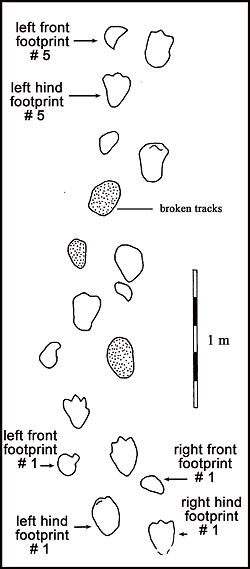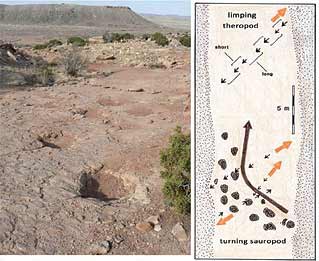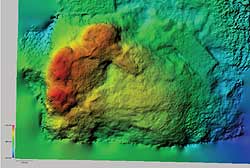PALEO HAPPENINGS June 2020 |
|||||||||
| The Golden Age of Big Dinosaurs by Martin Lockley, Moab Giants |
|||||||||
Most histories of North American paleontology tell us that large iconic dinosaurs like ‘Brontosaurus’ (technically Apatosaurus) and Stegosaurus were discovered, in 1877, outside the little town of Morrison, near Denver, Colorado. These bone-rich rocks were named the Morrison Formation, of Late Jurassic age (~150-145 million years). The discoveries set off a “dinosaur bone rush” and competitive “dinosaur wars” between famous paleontologists that led to finds across the region, including Dinosaur National Monument in 1909, now part of the Dinosaur Diamond. This history mentioned in hundreds of dinosaur books, never mentions Moab. But that should change because the first brontosaurian, or sauropod dinosaur was actually found south of Moab in 1859, the year Darwin’s famous book Origin of Species was published. This lesser-known discovery was made by the Macomb expedition, which left Santa Fe on a north western course, following the Old Spanish Trial, to find the confluence of the Colorado and Green Rivers. Although three boxes of bones were found and sent to the National Museum in Washington D.C., the location of the site was effectively lost until the late Fran Barnes, a well-known Moab resident and writer, rediscovered the location after diligent study of the Macomb expedition journals. Since then the bones have been studied, and new ones excavated, and the dinosaur has been named Dystrophaeus. There is no better place to celebrate what has been called the Late Jurassic “Golden Age of Dinosaurs” than in the Dinosaur Diamond. Dinosaur National Monument is great for bones, but you can’t beat the Moab area for tracks from this epoch. In previous, “Happenings” articles we outlined the track record from Late Triassic through Early and Mid Jurassic (~210-150 million years) when the carnivorous dinosaurs (theropods) reigned supreme. But in the late Jurassic we hit the dinosaurian big time. The best place to see sauropod (AKA brontosaur) tracks is at the Copper Ridge interpretative site northeast of Moab airport. Here our ‘trackers’ group found more than a dozen deep tracks of a multi-ton sauropod that made a sharp right turn, through 60o. We don’t know why the animal turned, but we know there are four theropod trackways at the site, the largest probably representing Allosaurus, the Utah State fossil. Fran Barnes found other sites in the region which we helped describe. The Moab area is famous among trackers for the first discovery of stegosaur tracks, named Stegopodus (literally stegosaur track). Stegosaurus, by the way, is the Colorado State Fossil. Another isolated stegosaur hind foot track named Deltapodus (meaning ‘D’ or delta-shaped) was recently found on Moab Giants land, after construction excavations. For good measure local resident Sue Sternberg, and friend Linda Bramkamp, found a Deltapodus trackway sequence, along the Spanish trail, this one with a dozen hind and front footprints is the best in the USA. So around Moab we have the tracks of the two most iconic animals that represent the world-famous Late Jurassic Morrison Formation and the Golden age of Dinosaurs. But stay tuned for our next article, on the tracks of pterosaurs, turtles and other exotic creatures. These important finds increasingly focus the spotlight of paleontological history and discovery on the Moab area.
|
|||||||||


